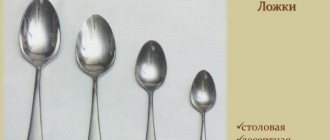A little physiology: where does pain come from?
Flowchart of how lactic acid is formed
Working in the gym with iron refers to those types of muscle activity that go beyond optimal limits and are stressful. In such cases, the body turns on emergency cell energy supply systems.
Read more about all the ways to eliminate muscle pain after training:
Normal physical activity on muscles does not exceed 50% of the possible maximum tension. Energy nutrition of cells in this mode occurs due to the breakdown of fats with an increased supply of oxygen to working areas of the body.
Strength exercises with weights go beyond the 50 percent threshold of maximum loads. During such work, the muscles become extremely tense; their strong contraction prevents the cells from being saturated with blood and oxygen. Pictured: Kai Greene
The heart muscle, working to the limit, does not have time to pump blood to the affected areas; it itself experiences oxygen starvation.
Under such conditions, the body transitions to anaerobic (oxygen-free) metabolism. Cells receive energy resources as a result of glycolysis: the breakdown of glucose into 2 organic acids.
- ATP (adenosine triphosphate) is absorbed by cells and provides energy for all biochemical processes in the body.
- Lactic acid, the second product of glycolysis, cannot leave the muscle fibers through the bloodstream during intense exercise and is forced to accumulate in them.
- The retention of lactic acid in the muscles leads to its decomposition into lactate and hydrogen ions.
Lactic acid content in blood
The more ATP the cells receive, the longer the body can work at increased intensity. The stress regime of energy supply ensures that muscles work at maximum loads, but is accompanied by the accumulation of lactic acid in them.
Accumulation mechanism
Why does lactic acid form in muscles during exercise? When performing various physical exercises, muscle tissue experiences a maximum need for oxygen, which it needs for normal functioning and replenishment of energy resources.
During intensive training, the muscles are under greater stress, which prevents the flow of oxygen to them, as a result of which the blood flow slows down. This happens already in the first minutes of exercise, but the workout lasts a long time, so the body needs to get fuel in other ways. With a lack of oxygen, the synthesis of ATP from muscle tissue glycogen begins to activate, and this pushes for the formation of lactic acid.
The amount of this substance begins to increase rapidly, so the blood does not have time to expel it from the body, which leads to a gradual accumulation, causing a burning sensation in the muscles. Unpleasant sensations are not the only drawback.
Excess acid leads to a decrease in energy potential, the removal of creatine, stopping the production of proteins, and also releases cortisol, the stress hormone.
This process is caused not only by heavy and intense loads, but also by regular walking, as well as other types of physical activity - cleaning, gardening, swimming and others. In this case, the discomfort will be less pronounced.
Pain syndrome during training
Lactic acid appears in the muscles after 30 seconds of lifting weights. Hydrogen anions, the acidic residues of the milk, begin to act on the muscle fibers. The result of their action is twofold.
- They damage muscle fibers, causing pain and burning in the muscles during exercise. Such pain is an indicator that the athlete is at the limit of his body’s capabilities. It is better for a beginner to stop, stop the exercise and consolidate the result in the next approaches. Experienced bodybuilders allow themselves to continue working through pain in order to make a leap forward.
- Hydrogen ions weaken the electrical charge of nerve signals to the muscles, causing them to feel tired. In this way, the nervous system blocks overload, requires rest, protecting the heart, brain, and working muscles from hypoxia (oxygen deficiency).
Even in a short rest period between approaches, the body has time to restore blood circulation, remove lactic acid and prepare for new loads. Within a few hours after training, it is completely eliminated, and the regeneration process begins in the worked areas: the release of hormones for the healing of fibers, the synthesis of proteins for the construction of new cells - the muscle becomes more powerful.
Sports nutrition and muscle pain
How to relieve pain from the accumulation of lactic acid in muscles using sports nutrition? It is enough to include the following drugs:
- Glutamine is the main amino acid from which muscle cells are built. It not only promotes better recovery, but also helps expel excess lactic acid. Sold in powder or tablet form.
- L-carnitine is famous for its ability to help burn fat, but it can also help reduce breast milk and improve athletic performance. Available in liquid form or in the form of tablets or capsules.
- Creatine will help flush out “fatigue toxins” from muscle tissue. It also has an anti-inflammatory effect.
- Beta-alanine will not only remove lactic acid, but will also prevent it from appearing in large quantities and will reduce the appearance of pain and burning in the muscles during training.
- Carnosine is a drug that reduces the content of hydrogen ions formed as a result of the breakdown of glucose. Available in tablets.
Thus, lactic acid in the muscles is both an advantage and a significant disadvantage of physical activity. In order to remove it after training or reduce synthesis, there are many methods: folk remedies, sports nutrition, sauna and hot bath. Massage, which you can do yourself, will help remove the acid. The best way to prevent the formation of “fatigue toxins” and pain is to adhere to an exercise regimen.
The article was checked and approved by Elizaveta Anatolyevna Krizhanovskaya, a practicing family doctor - see the authors of the site
- 1
- 3
Delayed pain syndrome
The pain that occurs on the second or third day after training is only indirectly related to lactic acid. The main reason is muscles unprepared for hard work.
Pain syndrome appears in muscles unprepared for stress:
- for beginners,
- during intensive work without preliminary warm-up;
- after a long break from classes;
- when changing training programs;
- after excessive strain on weights.
The source of pain is in the torn muscle fibers, where inflammation occurs. Symptoms of the inflammatory process:
- severe pain when moving; aches and weakness in the body;
- fatigue, weakness, lack of energy;
- fever, sometimes requiring pills or medical intervention.
Only a small part of intensively working muscles is injured by lactic acid ions. Delayed pain syndrome occurs in fibers that are unprepared for work and tear from severe tension. Adaptation to training and adequate loads prevent such pain reactions.
Symptoms
When lactic acid is formed, it is immediately felt by the body in the form of pain in the muscle tissue. Sometimes after a difficult workout it can even be difficult to walk and roll over in bed. The muscles that have been most involved in physical activity experience particularly severe pain. For example, after exercises on the legs, the quadriceps and hamstrings will hurt.
It is important to finish your workout correctly
Obvious symptoms of this phenomenon will be increased fatigue, a feeling of “overwhelm” and even a feverish state. This condition can last up to 5 days, but usually goes away on its own. But sometimes an excessive amount of lactic acid can lead to rupture and damage to muscle fibers, so special measures and procedures are designed to get rid of these sensations.
It is also worth remembering that feeling tired during training does not always lead to pain later. However, if there is severe burning and discomfort during exercise, you should stop training or reduce the load so as not to damage the muscle fibers.
Where and how is lactic acid excreted?
Those athletes who believe that lactic acid “kills muscles” are especially concerned about its elimination after training.
Muscle recovery after training
Bath or sauna. When visiting the steam room, it is recommended to do three approaches of 10, 20, 30 minutes with a five-minute break for rest.
About the benefits of the sauna and combining it with the training process, I recommend reading the article:
Hot bath. The water should be hot enough (39-42°), you need to immerse yourself in it so that the heart area is not heated. Every 20 minutes of being in hot water alternate with a 5-minute rest - you can do 3-5 such dives, ending the procedure with a cold shower.
Massage. Professional or restorative massage in a fitness club, or home muscle kneading helps to relax them and relieve residual tension.
After training, it is recommended to drink drinks such as:
- pomegranate and cherry juice,
- green tea,
- a decoction of nettle, rose hips and hawthorn with the addition of honey.
All these popular methods of muscle recovery help improve blood circulation, replenish vitamin C, elements for stimulating cardiac activity, and antioxidants. They can help in the treatment of inflammatory processes characteristic of delayed pain syndrome, but these methods are not associated with the removal of lactic acid. It is removed from the muscles by the body immediately after training and stress relief.
Studies have shown that the level of lactic acid in the blood of those who steam in a sauna is about the same as that of athletes simply relaxing. Nevertheless, it does not hinder the athlete to master the proper circulation of lactic acid in his body.
Delayed or delayed pain syndrome
What kind of syndrome is this? Now I will try to explain. In short, this pain appears some time after training, and after the pain from lactic acid goes away. That is, the muscles immediately hurt from lactate, then from this syndrome. And now in more detail.
You have already heard a hundred times that when we train hard, our muscles receive microtraumas. They are very small (several hundred millimeters), whereas ordinary injuries can occur over a muscle area of several centimeters. Do you feel the difference?
Usually, after 1-2 days, a bodybuilder’s body experiences so-called “soreness,” when the whole body hurts and aches. Sometimes it takes 2-3 days, maybe a week, for the pain to go away and the necessary immune cells, at the command of our brain, to patch up the “oils” damaged by training. At the site of healing of microtrauma, an inflammatory process is formed, which causes pain.
Recovery time depends on the body’s individual ability to recover, and this is determined primarily genetically. Personally, after a hard workout, pain can be felt after 3 days and after 5 days, depending on the amount of microtrauma in the muscles. After average level training, 1-2 days. But in any case, this is not an instant process, so you will have to endure the pain for some time.
So, traumatic pain from micro-tears, which occurs immediately after pain from lactic acid, is “delayed or delayed pain syndrome”...
Yes, and also - the more trained you are, the less likely it is that muscle soreness will be your companion. Beginners are forced to be in this state chronically for some time, since even the most average loads are unusual for their bodies.
How to Manage Lactic Acid
A painful reaction in tense muscles is caused by only one component of lactic acid - the hydrogen ion; the other part of the acid - lactate - is a truly invaluable energy resource of the body. Being a product of the breakdown of glucose, it allows you to quickly replenish cellular energy reserves. In stressful situations, during periods of intense work, brain cells, heart muscles, and slowly working muscles replenish ATP reserves using lactate.
- A burning sensation in the muscles during strength exercises is a signal that a sufficient amount of lactate has accumulated in them, and the athlete’s task is to properly remove and mobilize it.
- A short rest between sets restores blood circulation in the muscles, and lactate is removed from them through the blood vessels. It is important to resume the exercise in time to prevent the muscles from cooling down, because then the body will switch to a different energy supply mode and the formation of lactate will decrease.
- It is necessary to alternate strength exercises with cardio exercises. During aerobic training (running, walking, cycling), lactate is redirected from fast-working muscles to “slow” ones and becomes a source of energy for them. This is how the energy supply for long and intense workouts occurs.
- Drinking plenty of fluids during exercise and maintaining water balance promotes normal blood circulation. You should drink a glass of clean water every 10-20 minutes of training in the gym.
- Sports nutrition. During the recovery period after exercise, lactic acid is removed from the muscles and is sent through the bloodstream to the liver, where it is converted into glycogen, a necessary resource for the body’s future energy expenditure.
To replenish these reserves, you need a diet, the main features of which are:
- the predominance of slow carbohydrates that form glycogen;
- a sufficient amount of protein - so that muscle fibers do not tear or become inflamed after training;
- drugs beta-alanine, carnosine, citrulline, which help relieve pain after training.
Role in the body
In the human body, the process of glycolysis transforms glucose into lactic acid and ATP. This process occurs in muscle tissue, including the heart, which is especially important for enriching the myocardium with lactic acid.
In addition, lactate is also involved in the so-called reverse glycolysis, when glucose is formed as a result of certain chemical reactions. This transformation occurs in the liver, where lactate is concentrated in large quantities. And the oxidation of lactic acid provides the energy necessary for the process.
Lactic acid is a significant component of chemical reactions occurring in the body. This substance is important for metabolic processes, muscle function, nervous system and brain.
Rules for organizing training so that your muscles don’t hurt
Following the principles of training will help get rid of muscle pain or reduce it to a minimum.
- To avoid tearing your muscles on the machine, you need to warm up; To remove lactic acid from worked muscles, you need a cool-down.
- Increase the number of repetitions with weights gradually; during short periods of rest, do not allow the muscles to cool down.
- Alternate strength exercises with cardio exercises - this will ensure the duration and intensity of the workout.
- Do not take long breaks between classes to avoid delayed pain syndrome.
- After classes, you need active rest with the involvement of “slow” muscle fibers. They use lactate as fuel and promote the rapid removal of lactic acid from worked muscles.
Diseases that lead to the accumulation of lactic acid
Some health conditions can reduce oxygen levels in the blood, leading to increased lactate production. These diseases include:
- heart failure
- severe infections
- shock
- poorly controlled diabetes
In addition, liver damage and disease can affect the liver's ability to remove lactate from the blood. This can lead to high levels of lactate in the blood, which doctors call hyperlactatemia.
.
In some cases, hyperlactatemia may progress to lactic acidosis
. Left untreated, lactic acidosis can change the pH balance of a person's blood, which can lead to serious health complications. Symptoms that doctors associate with lactic acidosis:
- sweet smelling breath
- cool and clammy skin
- abdominal pain
- nausea or vomiting
- diarrhea
- headache
- disorientation
- weakness
- yellowing of the skin or whites of the eyes
- coma
Lactic acidosis is also a rare side effect of some HIV medications. Anyone who thinks they have lactic acidosis or hyperlactatemia should see a doctor immediately. Your doctor will usually do a blood test to check your blood lactate levels.
Related article: A child complains of neck pain - what to do?
Lactic acid and testosterone production
Perhaps lactic acid stimulates testosterone synthesis in the body. This dependence was established by East Asian scientists. The concentration of testosterone in the blood of experimental rats after exercise was 2 times higher than before it. And after the injection of lactic acid, the content of the male hormone in the experimental animals increased 4 times.
It is likely that lactic acid enters the testicles and hypothalamus through the blood, where the process of testosterone synthesis can be started. In order for it to begin, the intense load on the muscles must be long enough: 15-60 seconds. If the connection between the production of lactic acid and the release of testosterone into the blood is proven, athletes will receive an inexpensive supplement to effectively increase muscle mass.











